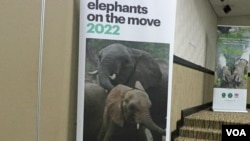Malawi government and conservationists move 250 elephants from a park in the southern part of the country to a central park where almost all populations have been poached. Announced the plan. However, communities living near the park are afraid that new arrivals can lead to larger human-wildlife conflicts.
The month-long movement begins on Monday, with animals transported about 350 kilometers by road from Liwonde National Park in southern Malawi to Kasungu National Park in central Malawi.
Malawi's National Park Wildlife Director, Brighton Kumcedova, said Kasungu's elephant population will increase and the relocation will minimize human-wildlife conflict in the community around Liwonde. He said it could be limited.
He said that Liwonde currently has about 600 elephants, twice as many as the park will house.

"The elephant in Liwonde has exceeded the carrying capacity of the park," he said. "What is happening now is the destruction of habitats when they go looking for food and water. At the same time, the conflict between humans and elephants, where people were killed and their property was damaged. One way to minimize this problem is to move these animals. ”
The International Animal Welfare Fund (IFAW) supports the movement of elephants. It is said that about 1,200 elephants lived in Kasungu National Park in the 1970s.
Poaching has significantly reduced populations, leaving only 50 elephants by 2015. Since then, poaching prevention efforts have brought the population back to 120.
Patricio Dazela, top official of IFAW. The new elephant helped Kasungu attract more tourists and said more animals might follow.

"By seeing Kasungu, the center of the country's tourist attraction, and bringing more animals, including elephants, to the park And in the future, we're thinking of bringing the Big Five, and there's already a leopard there, "he said. "That's why we're talking about lions and other species related to them."
But communities living near Kasungu are new to triple the elephant population in the park. We fear that elephants can lead to more human-wildlife conflicts. Rosemary Banda, a small farmer in the village of Linyangwa in the Kasungu district, is one of the vigilant locals.
"Our concern is that many elephants here contribute to food shortages because elephants have destroyed our crops in the past," she says. I did. "There were times when elephants destroyed my crops and left without enough food to depend on produce to survive."

To ease local horror, Mr. Kumchedova said the government was 40 kilometers long in Kasungu to prevent elephants from entering the village. He said he had built a fence.
"If well maintained, it's an effective barrier," he said. "Elephants do not frequently participate in the community, but also to support that when these animals are dropped into Kasungu, some of them can be collared for easy monitoring. We also have teams for both ground and air support, so we will protect the community in real time if these elephants break. ”
Malawi is Kotakota Wild. In 2016, when 520 elephants inhabiting the bio-sanctuary moved, we made the largest elephant movement in history.
As of the last survey in 2015, Malawi had a total of about 2,000 elephants, a 50% decrease from the 1980s.


